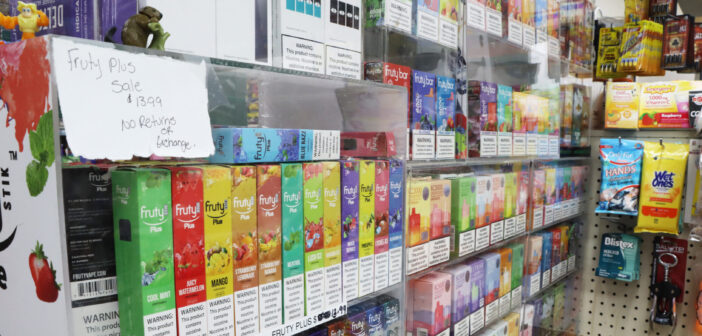The fruity flavors, sleek design and convenience of e-cigarette products aren’t the only factors making them more appealing to a younger audience. Social media has also acted as a catalyst for the teenage vaping epidemic.
A 2019 study from the Centers for Disease Control and Prevention found an association between increased use of social media by adolescents or teens susceptible to e-cigarette use and increasing their perceptions that using e-cigarettes does little harm.
According to Common Sense Media, a research and advocacy organization focused on entertainment and technology recommendations for families and schools, children as young as 8 years old are using social media at unprecedented rates. This has raised concerns among staff regarding social media’s influence on youth in Lehigh Valley schools.
Deanna Webb, the Southern Lehigh Valley Middle School principal, said social media has pushed false information about the dangers of vaping, which has influenced teens to use the substance.
“As adults, we know that social media is not a true representation of someone’s life,” Webb said. “Social media is not always accurate, but teens don’t always realize that. So, I think social media has really played a big role in the increase in the use of vaping.”
Marcella Bianco, director of Government Projects at CATCH Global Foundation, said around 90% of youth use social media, creating a platform for e-cigarette companies to directly target a young audience.
She oversees the implementation, outreach and strategy for the CATCH My Breath program, an evidence-based vaping prevention program run by CATCH. She said JUUL, an e-cigarette company, became popular by using social media to guide its products into the hands of teens.
Bianco said teens see both paid advertisements and non-sponsored content for e-cigarettes on social media and it gives the generation a platform to show each other it is cool to use e-cigarettes. She said tobacco products are not allowed to be advertised on traditional television or in magazines, so e-cigarette companies were forced to promote their product through other outlets.
They figured out where their audience was.
A 2019 Stanford University Study highlights how JUUL exploited social media to target teens by using hashtags and other channels, which led to the company being sued by multiple states for marketing to youth. In April 2023, the company reached a $462 million dollar settlement with 47 states and territories.
“Most of our youth are using social media and the tobacco industry knows this,” Bianco said. “That’s where advertisements are being played.”
Webb said teens search and compare themselves to what’s posted on social media, and it has influenced them to do the wrong things and pick up bad habits from social media influencers — like Doja Cat, who was seen in viral videos vaping at the Met Gala.
In an ideal world, Webb said it would be great if social media could be regulated to prevent kids under the age of 16 from seeing these substances being used on the internet, but it would be difficult to do.
“(Social media) is not the same kind of beast as commercials and TV that were regulated years ago to not allow alcohol and tobacco unless it was for (people) 18 and over and 21 and over, but social media just doesn’t work like that,” Webb said.
Sara Weisman, a programming executive for Lehigh University’s Peer Health Advisors, agreed social media influencers have accelerated the momentum of the teen vaping epidemic.
She said teens see influencers using e-cigarettes on platforms such as Snapchat, Instagram and TikTok, so they decide to give vaping a try.
“Teens really look up to those influencers that they see all over social media,” Weisman said. “So if they are seeing their favorite influencer vaping, even if they don’t support it and really talk publicly about it, they are going to be more motivated to do it.”
While Weisman said social media has augmented the vaping epidemic, she said it can also be used to help curb it.
She said social media provides an opportunity to spread educational information about the harms of vaping and could hopefully persuade teens to quit — or not even start in the first place.
“I definitely think that if someone’s favorite influencer can encourage someone to vape…an influencer talking about the harms of vaping could be really beneficial on the opposite end and encourage them not to vape,” Bianco said. “Getting bigger names to use their platforms could be really helpful in ending the epidemic.”






Comment policy
Comments posted to The Brown and White website are reviewed by a moderator before being approved. Incendiary speech or harassing language, including comments targeted at individuals, may be deemed unacceptable and not published. Spam and other soliciting will also be declined.
The Brown and White also reserves the right to not publish entirely anonymous comments.
2 Comments
Social media’s influence on youth vaping is concerning. It’s crucial to combat misinformation and promote awareness of the risks associated with vaping through targeted education and regulation.
I fully share your opinion. This is a great idea. I am ready to support you.